Section 1
Multi-disciplinary Research
Increasingly, government, industry and the research sector are looking towards multi-disciplinary research to solve complex problems. Knowledge flows between usually distinct disciplines attract interest because major advances in innovation often involve collaboration across disciplinary boundaries.
Outputs submitted to ERA are assigned up to three four-digit FoR codes each, reflecting their disciplinary content. Where two or more codes are assigned to a single output, the differently coded content might be related at the two-digit level. An example is an output that has been assigned (apportioned) as part 0603 and part 0604 (i.e. Evolutionary Biology and Genetics–both of which are within 06 Biological Sciences). Multi-disciplinary (MD) research involves two or more academic disciplines that are considered more distinct. In this section a multi-disciplinary output is one where the content has been apportioned by universities to two or more FoR codes from different two-digit FoR groups. An example of a multi-disciplinary output is one where the research content draws on both Applied Mathematics (0102) and Genetics (0604) and the submitting university has apportioned the paper to each of these FoR codes from different two-digit groups (01 Mathematical Sciences and 06 Biological Sciences).
The chart below presents an analysis of ERA 2015 outputs for each two-digit FoR group, showing what proportion of outputs are multi-disciplinary. Of all outputs submitted with 17 Psychology and Cognitive Sciences content, 41 per cent were multi-disciplinary (co-apportioned with content from a discipline group other than 17). Conversely, 59 per cent of ‘17’ outputs were either wholly apportioned to a single FoR within 17, or were co-apportioned with other FoRs from the 17 group. Other discipline groups with a high proportion of multi-disciplinary outputs were 05 Environmental Sciences and 10 Technology, both with around 38 per cent of submitted outputs being multi-disciplinary.
Proportion of ERA 2015 outputs that are multi-disciplinary* by two-digit FoR code

*A ‘multi-disciplinary’ output is one where content has been assigned to two or more four-digit discipline codes from separate two-digit FoR groups. For example, an output assigned to both 0102 and 0905 (Applied Mathematics and Civil Engineering), is considered here to be ‘multi-disciplinary’; by contrast, an output wholly-assigned to a single four-digit code, or to two or more codes within the same two-digit group (for example, to 0102 Applied Mathematics and 0104 Statistics; both within ‘01 Mathematical Sciences’) is not classified as multi-disciplinary here.
Multi-disciplinary profiles for two-digit FoR groups
This section presents a profile of multi-disciplinary content for each two-digit FoR group. The profiles aim to show which disciplines are most likely to appear together in multi-disciplinary outputs. The profiles in the pie chart on the left show, for each two-digit discipline, what proportion of outputs are multi-disciplinary (as shown in the previous figure). On the right they show the apportioned content of the multi-disciplinary outputs. The first profile shows that of the 2,475 outputs identified as multi-disciplinary in 01 Mathematical Sciences, 47 per cent of their content was coded within 01 itself; 16 per cent of their content was apportioned within 09 Engineering; nine per cent was apportioned as 08 Information and Computing Sciences; and so forth. Most of the other codes held a less than five per cent share of the multi-disciplinary outputs’ apportioned content, and have been grouped as ‘other’. The highest apportionment goes to 01 Mathematical Sciences because that is what these outputs all have in common: they are multi-disciplinary outputs with Mathematical Sciences content, plus content apportioned to one or two other two-digit FoRs.
Guide to the multi-disciplinary profiles:
01 Mathematical Sciences – Multi-disciplinary content profile

* MD: Multi-disciplinary, defined as any output that is apportioned to codes from two or more two-digit FoR groups.
02 Physical Sciences – Multi-disciplinary content profile
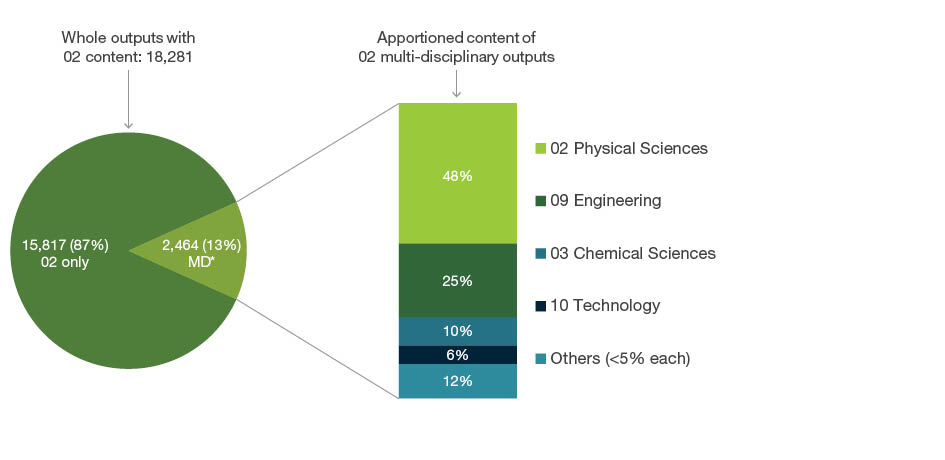
03 Chemical Sciences – Multi-disciplinary content profile
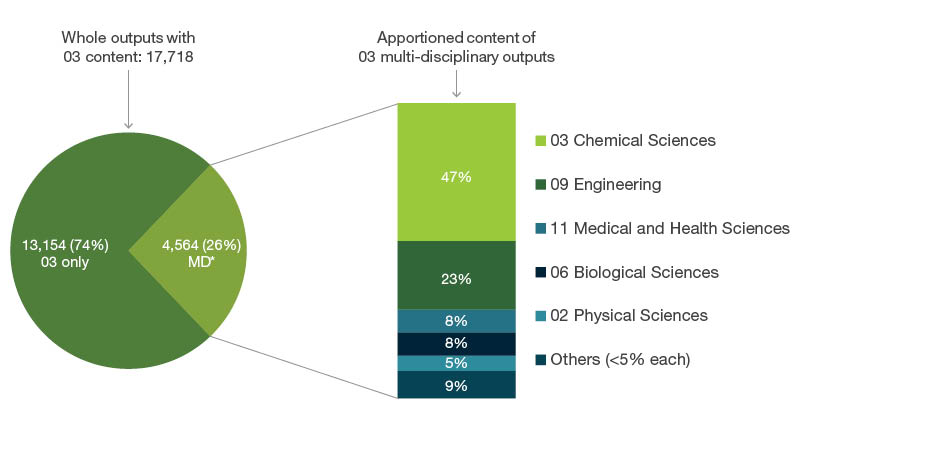
04 Earth Sciences – Multi-disciplinary content profile

* MD: Multi-disciplinary, defined as any output that is apportioned to codes from two or more two-digit FoR groups.
05 Environmental Sciences – Multi-disciplinary content profile

06 Biological Sciences – Multi-disciplinary content profile
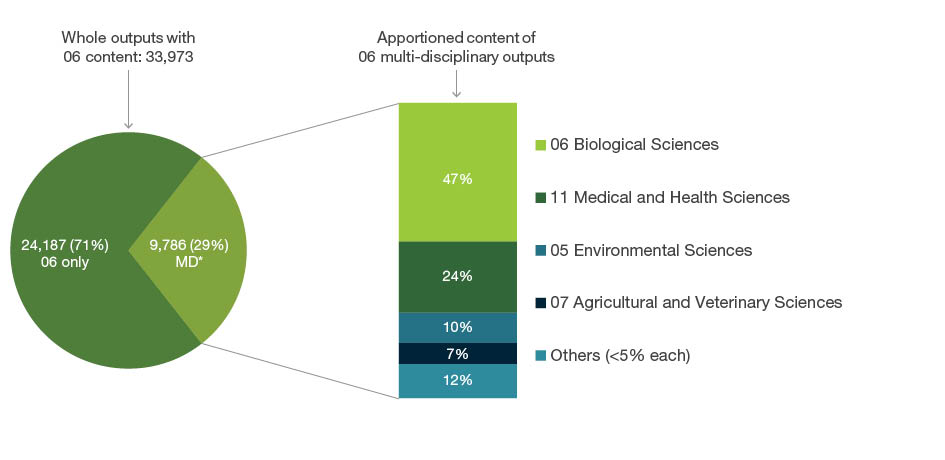
07 Agricultural and Veterinary Sciences – Multi-disciplinary content profile
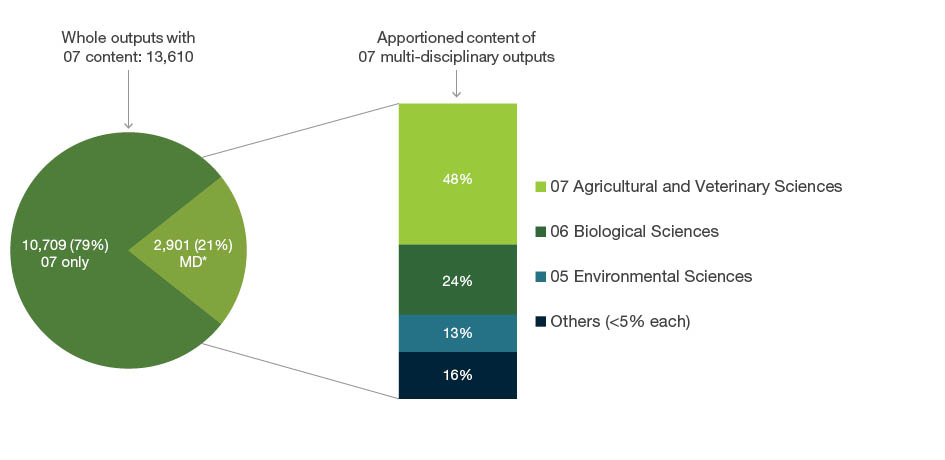
* MD: Multi-disciplinary, defined as any output that is apportioned to codes from two or more two-digit FoR groups.
08 Information and Computing Sciences – Multi-disciplinary content profile

09 Engineering – Multi-disciplinary content profile

10 Technology – Multi-disciplinary content profile
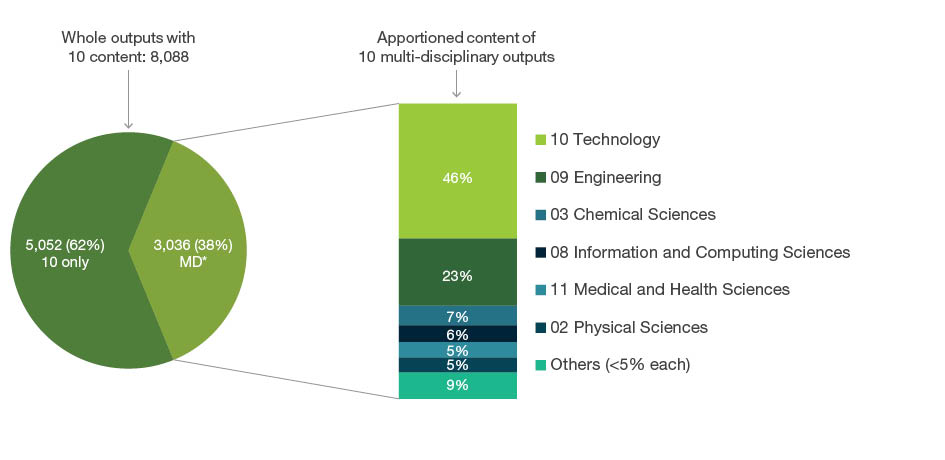
* MD: Multi-disciplinary, defined as any output that is apportioned to codes from two or more two-digit FoR groups.
11 Medical and Health Sciences – Multi-disciplinary content profile
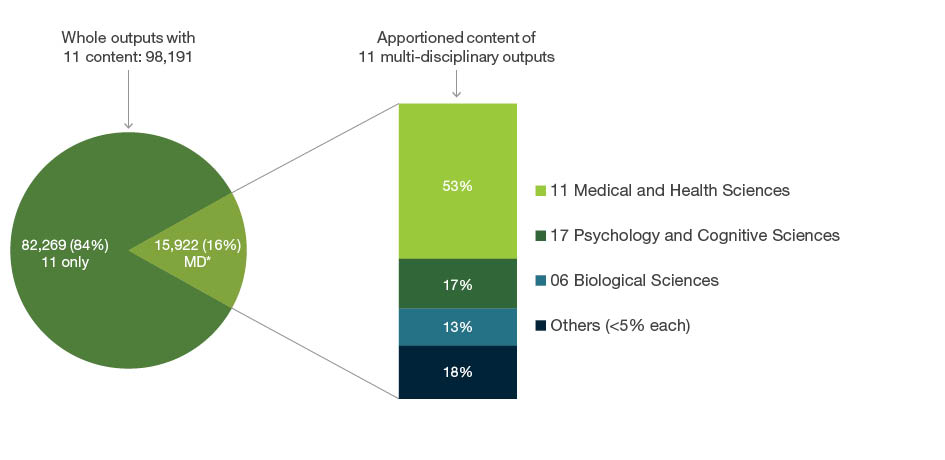
12 Built Environment and Design – Multi-disciplinary content profile

13 Education – Multi-disciplinary content profile

* MD: Multi-disciplinary, defined as any output that is apportioned to codes from two or more two-digit FoR groups.
14 Economics – Multi-disciplinary content profile
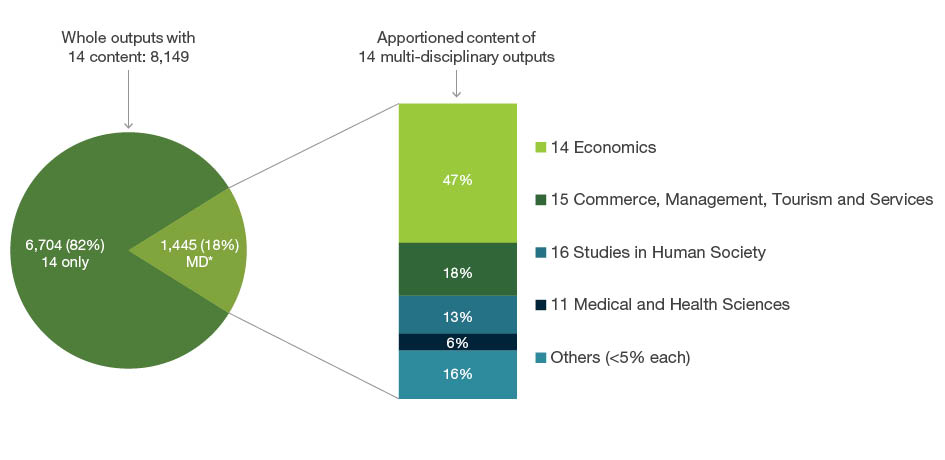
15 Commerce, Management, Tourism and Services – Multi-disciplinary content profile

16 Studies in Human Society – Multi-disciplinary content profile
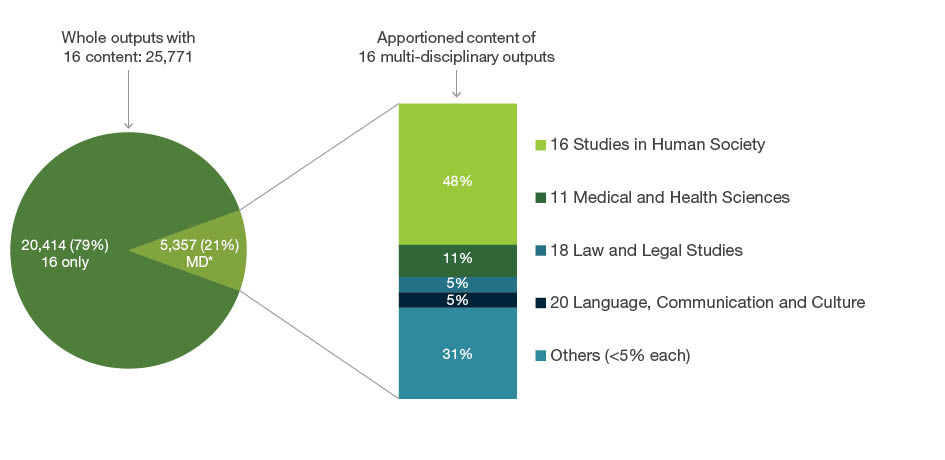
* MD: Multi-disciplinary, defined as any output that is apportioned to codes from two or more two-digit FoR groups.
17 Psychology and Cognitive Sciences – Multi-disciplinary content profile
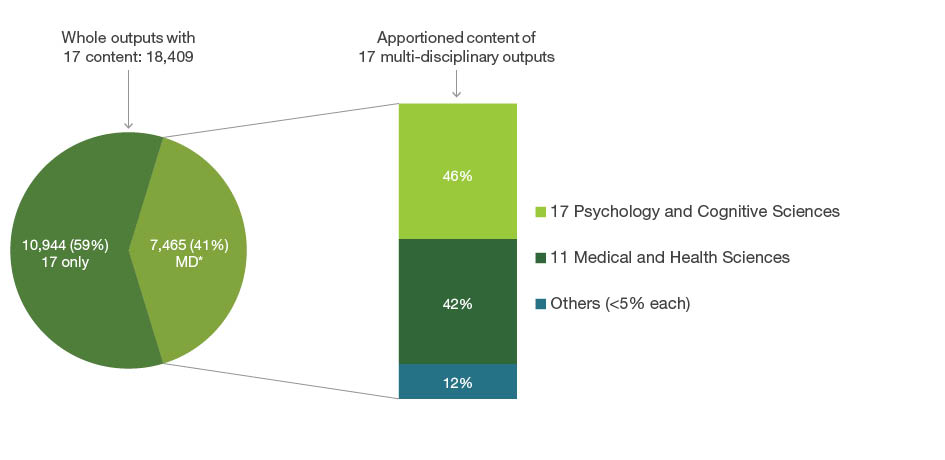
18 Law and Legal Studies – Multi-disciplinary content profile
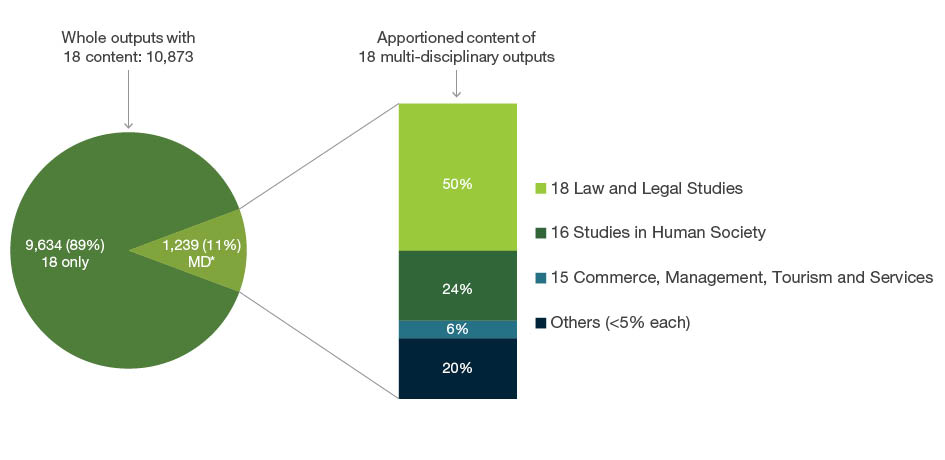
19 Studies in Creative Arts and Writing – Multi-disciplinary content profile

* MD: Multi-disciplinary, defined as any output that is apportioned to codes from two or more two-digit FoR groups.
20 Language, Communication and Culture – Multi-disciplinary content profile

21 History and Archaeology – Multi-disciplinary content profile

22 Philosophy and Religious Studies – Multi-disciplinary content profile

* MD: Multi-disciplinary, defined as any output that is apportioned to codes from two or more two-digit FoR groups.
